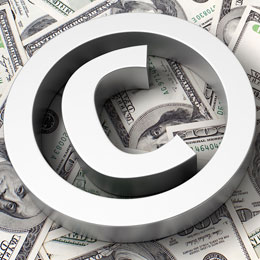
Increasingly, ABL structures incorporate intangible assets such as trademarks, patents, customer lists and other intellectual property assets in the borrowing base. As discussed below, the willingness of lenders to leverage these assets reflects a natural development in the evolution of the ABL product. To provide some context, we discuss below the history of IP lending and how this product continues to evolve and grow.
The Evolution of IP Lending
Asset-based lending commitments to retailers and consumer products companies grew in the 1990s as lenders became more comfortable with the notion that inventory recoveries in liquidation were fairly predictable. As the asset recovery model became better understood, junior capital providers emerged who were willing to lend behind senior ABLs on a “last out” basis. Often these lenders extended the coverage of their security interests to include the borrower’s intellectual property assets, although these intangible assets were rarely considered elements of the borrowing base principally because they required a more sophisticated understanding of potential recovery values in liquidation.
Starting around 2003, certain lenders emerged who were willing to provide “junior capital” secured primarily by IP assets. The term “junior capital” was a misnomer since these lenders typically had a first lien on the borrower’s IP. Interest in this type of lending waned on the heels of the Great Recession. Several lenders lost money because they had underwritten deals based on GAAP valuations of “general intangibles including goodwill” without a firm understanding of liquidation recovery values. As with any asset, understanding the path to recovery is a critical component of sound underwriting.
Recently, the “junior capital” structure built on an IP lending platform has re-emerged. This time around, the market is not limited to a handful of specialty players, but includes many banks, funds and finance companies. Having an IP lending capability is now a crucial tool in the kit of most ABLs. In our opinion, and based on what we are seeing in the ABL market daily, the number and value of these IP based deals will continue to increase at an accelerating rate. Many factors are driving this dynamic.
IP Values are Increasing
A number of long-term trends are creating significant value in the increasingly broad category of intangible assets. At the forefront of this trend is the growth of the knowledge economy. Not only are there increasingly significant investments being made in “soft” assets such as software, algorithms, and databases of information, but there has been a significant increase in patent investment as well. Additionally, the internet has “flattened” the retail landscape and empowered brands that were once "niche-y" or relegated to local markets to achieve national and international prominence. There are more brands in almost every product category today than there were 20 years ago. This is true in almost every category from soft drinks, to denim, to televisions.
This growth, combined with the growth of GDP, has increased significantly the absolute dollar value of brand, patent, copyright and other intangible assets on the balance sheets of North American companies. Additionally, these assets now represent an even larger percentage of balance sheet assets than they did even a few short years ago. The combination of the decline in real estate values, the working capital efficiency that comes from improved supply and distribution chains and outsourced just in time manufacturing, means that a growing number of companies have balance sheets that show greater intangible asset value than the combined value of all the other assets.
IP Values are More Predictable
By definition, intangible assets are unique. There can only be one patent, trademark, or copyright filed for a particular design, process, brand, or component. The legal claim to these assets provides the buyer with the right to exclude others. But, exclude them from what? Imagine buying the Amazon brand in distress, along with the customer database, purchase histories, list of marketplace suppliers, SKU database, product reviews, and digital images. Even without the warehouses, robots, and talent pool, this would still be a valuable asset for any national retailer. On a smaller scale, the ability to communicate directly with a customer through the power of a known brand eases the transition to new categories, new channels, new geographies and new business models. Ultimately value depends on the nature of the asset, how that asset communicates value to customers, and the market outlook for the product categories it covers. But these are longer term concepts and while asset values may deteriorate over time without continued deployment in the market, that curve is gradual.
Unlike many other asset classes (particularly inventory), IP values typically don’t have a seasonal component to recovery value. Part of this relates to the relatively low carrying costs associated with brands, patent portfolios and other similar assets. Additionally, the strategic value of these assets encourages market participants to move quickly rather than wait for a better timed opportunity.
IP assets are also extremely portable. A key reason that IP recoveries are so dependable is that they can be deployed by many different entities, often around business models that are superior to the model in which the IP was previously housed. For brands, portability may translate into transition to a licensing model or diversification through increased product assortment. When IP assets have legal protection in multiple territories, their value increases not only by virtue of the sizes of the markets but the diversification of income streams.
Continued on Page 2...